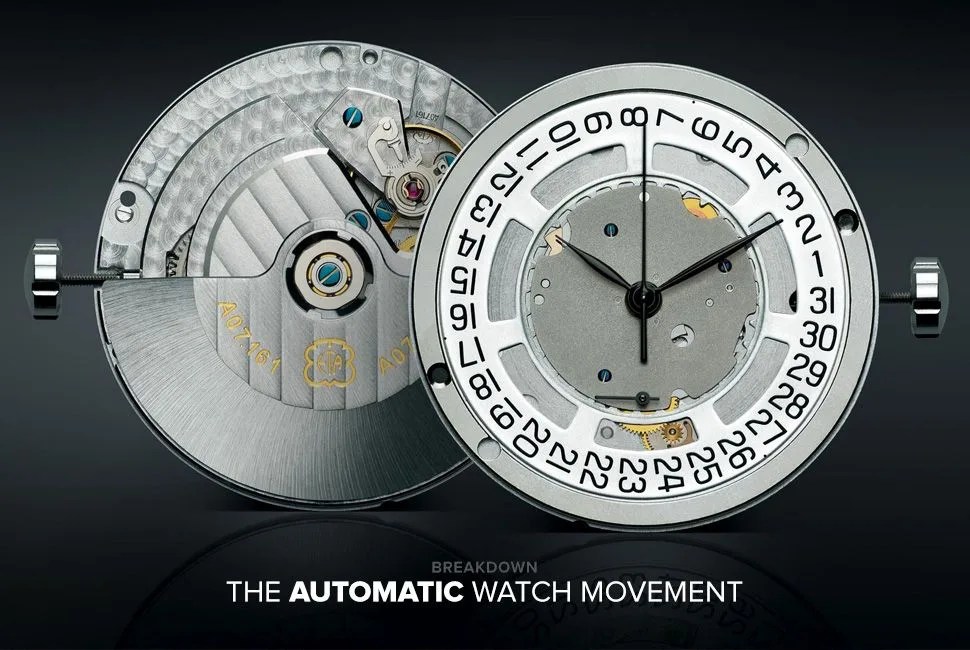The mechanical watch is enjoying a renaissance, and watch companies big and small don’t waste the opportunity to show off the gears and springs that separate these time capsules from their battery-driven brethren; flip over most mechanical timepieces and you can gaze into the motors that drive them thanks to a clear case back. But do you really know what’s going on in there?
Most mechanical watches these days are automatics. “Automatic” is just another term for “self-winding”, meaning the watch winds itself using a weight inside the watch that oscillates to put tension on the mainspring through the random motion of the watch wearer’s arm. Batteries not included — or needed. And you don’t have to risk carpal tunnel syndrome by winding them every morning using the crown either (unless you want to).
Most of the Swiss automatic movements used these days are sourced from the Swiss behemoth, ETA, a subsidiary of the Swatch Group. ETA was born of the quartz crisis in the 1970s and ’80s, a product of the consolidation and streamlining of the then-splintered Swiss watch industry. Today ETA movements are everywhere. To say they are the workhorses of the industry is no overstatement.
So just what are you looking at when you flip over your Tissot or Swiss Army watch and peer through the case back crystal at that ETA automatic? It’s time to learn. We break it all down for you above.
